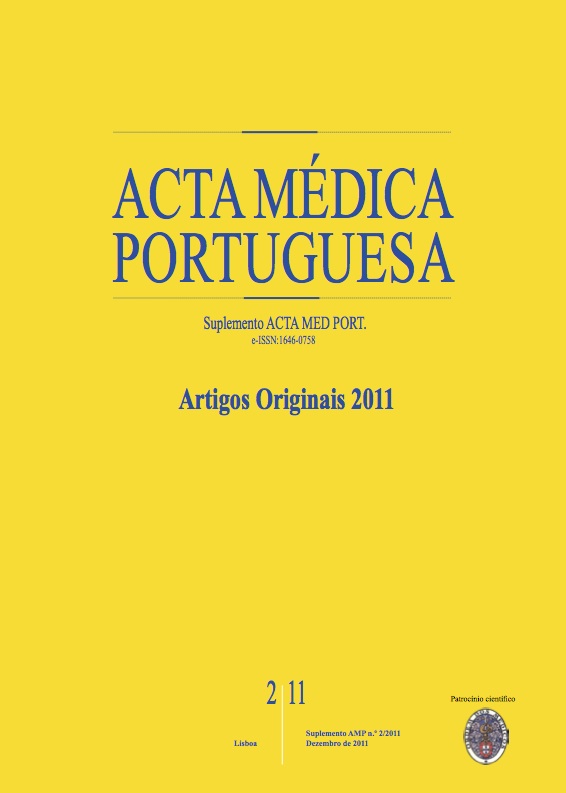Association between hyperuricemia and insulin resistance.
DOI:
https://doi.org/10.20344/amp.1435Abstract
INTRODUCTION: An association between insulin resistance (IR) and cardiovascular risk factors has been widely described. However, the association between IR and hyperuricemia has been less studied. The objective of this study was to describe the prevalence of hyperuricemia in a community sample of Portuguese adults and evaluate its association with IR. METHODS: As part of a health and nutrition survey, 1370 community participants (852 women and 518 men) were evaluated. IR was calculated using the homeostasis model assessment index (HOMA) and IR was considered present when HOMA ≥ 1.85 (the lowest value of the upper quartile of HOMA distribution). Hyperuricemia was defined in women as uric acid ≥ 6.0 mg/dl and in men ≥ 7.0 mg/dl. Unconditional logistic regression models were computed and odds ratio (OR) and confidence intervals at 95% (95% CI) were adjusted for age, alcohol and tobacco consumption, creatinine levels, body mass index and menopausal status. Results: The overall prevalence of hyperuricemia was 12.8%, 9.9% in women and 17.8% in men (p < 0.001). After adjustment, individuals with hyperuricemia had a higher prevalence of IR (OR=1.84 95% CI 1.25-2.73). An increased prevalence of IR was associated with increasing levels of uric acid (p for trend <0.001). After gender stratification, only hyperuricemic men had a higher prevalence of IR (OR=2.17 95% CI 1.24-3.31). Men and women in the upper quartile of uric acid had a higher prevalence of IR (OR=2.51 95% CI 1.22-5.16 and. OR=1.88 95% CI 1.06-3.31, respectively) and a significant trend of increasing prevalence of IR with increasing quartiles of uric acid was observed (p=0.015 in women and p=0.004 in men). Conclusion: Hyperuricaemic men had a higher prevalence of IR. Both men and women in the upper quartile of uric acid distribution showed positive associations with IR and an increased prevalence of IR with increasing quartiles of uric acid was observed.Downloads
Downloads
How to Cite
Issue
Section
License
All the articles published in the AMP are open access and comply with the requirements of funding agencies or academic institutions. The AMP is governed by the terms of the Creative Commons ‘Attribution – Non-Commercial Use - (CC-BY-NC)’ license, regarding the use by third parties.
It is the author’s responsibility to obtain approval for the reproduction of figures, tables, etc. from other publications.
Upon acceptance of an article for publication, the authors will be asked to complete the ICMJE “Copyright Liability and Copyright Sharing Statement “(http://www.actamedicaportuguesa.com/info/AMP-NormasPublicacao.pdf) and the “Declaration of Potential Conflicts of Interest” (http:// www.icmje.org/conflicts-of-interest). An e-mail will be sent to the corresponding author to acknowledge receipt of the manuscript.
After publication, the authors are authorised to make their articles available in repositories of their institutions of origin, as long as they always mention where they were published and according to the Creative Commons license.









